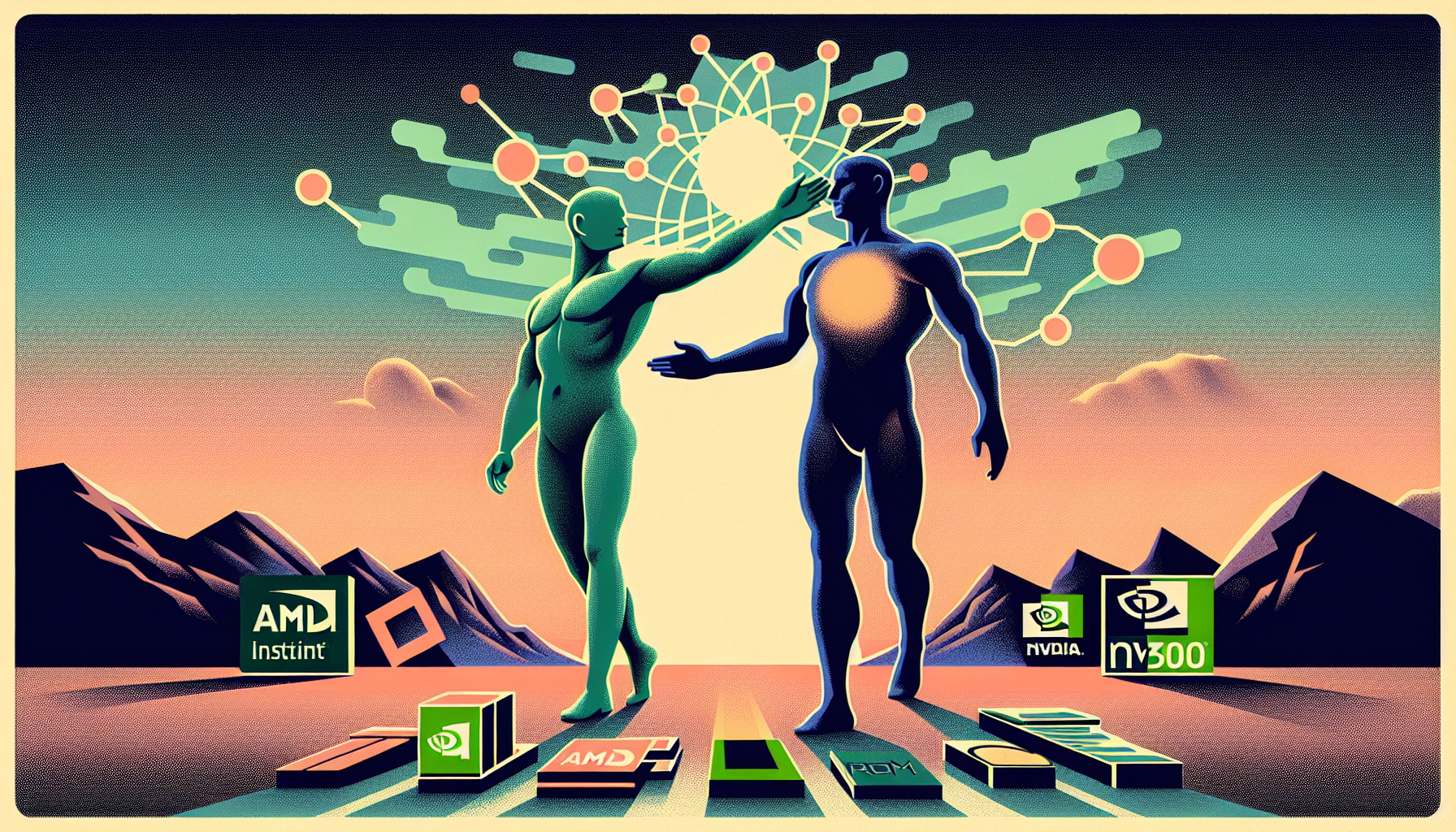AMD has made a bold move in the world of artificial intelligence, putting itself shoulder to shoulder with Nvidia—long considered the leader in AI hardware. With the introduction of the AMD Instinct MI350 Series GPUs and the powerful ROCm 7.0 software, AMD is reaching new heights in AI computing. This launch is supported by strategic partnerships with both innovative startups and renowned names like OpenAI, showing AMD’s ambition to be at the heart of the AI revolution.
AMD Instinct MI350 Series: A New Benchmark in AI Hardware
Unveiled at the Advancing AI 2025 event, the Instinct MI350 Series stands out for its remarkable performance and efficiency improvements:
- Powerful Performance: The MI350 Series achieves up to 4 times the AI processing capability of its previous versions. For inference jobs—where computers draw conclusions from their training—this jump is even greater, with performance increasing by as much as 35 times.
- Exceptional Memory: Armed with 288 GB of HBM3e memory, the MI355X and MI350X GPUs have more memory capacity than Nvidia’s fastest chips. This allows them to handle larger and more demanding AI workloads efficiently.
- Cost-Effective Solutions: The MI355X chip stands out for offering up to 40% more results, or “tokens,” per dollar in AI tasks compared to competitors. This advantage helps cloud providers and data centers get more value for their investment.
ROCm 7.0: Powering AI Development
Hardware is only one side of the equation. With the launch of ROCm 7.0, AMD provides software that fully harnesses the power of its new GPUs. This platform is open, meaning developers have the freedom to build and deploy AI models without restrictions.
- ROCm 7.0 delivers over four times faster AI inference and three times faster training than its previous version, making development quicker and more efficient.
- Alongside ROCm 7.0, AMD has launched a developer cloud. This environment gives researchers, startups, and companies easy access to the latest Instinct GPUs and ROCm tools, helping to spark new ideas and speed up innovation.
Building a Stronger AI Ecosystem
AMD’s strategy focuses on more than hardware and software alone. The company is fostering a complete AI ecosystem by working closely with industry leaders including Dell Technologies, Hewlett Packard Enterprise, Cisco, Oracle, and Supermicro. Through these partnerships, the MI350 GPUs are reaching more people and powering broader uses in areas from data centers to cloud-based AI services.
Looking ahead, AMD has shared its vision for Helios, a powerful rack-scale AI infrastructure. Helios brings together:
- Next-generation MI400 GPUs, which are expected to provide up to 10 times more inference performance for demanding AI models,
- 5th Gen EPYC “Venice” CPUs for advanced data processing,
- AMD Pensando “Vulcano” network interface cards for fast and secure connections.
This open-standards infrastructure is already being adopted in places like Oracle Cloud, with broader availability planned for the second half of 2025.
Challenging Nvidia’s Reign
AMD’s MI350 Series is designed as a direct competitor to Nvidia’s latest AI chips. With similar or even superior performance in both training and inference—and a clear cost advantage—AMD is emerging as a strong alternative. Its commitment to open software, high memory capacity, and partnership-driven ecosystem gives it a significant edge for organizations looking for powerful and flexible AI solutions.
The Road Ahead
The Instinct MI350 Series and ROCm 7.0 mark a turning point for AMD in AI computing. By combining breakthrough hardware, advanced software, and a spirit of collaboration, AMD is not only matching Nvidia’s offerings but working to set new benchmarks in performance, scale, and accessibility.
With this bold step, AMD is honoring its long tradition of innovation and positioning itself as a key champion in the future of artificial intelligence.

Leave a Reply